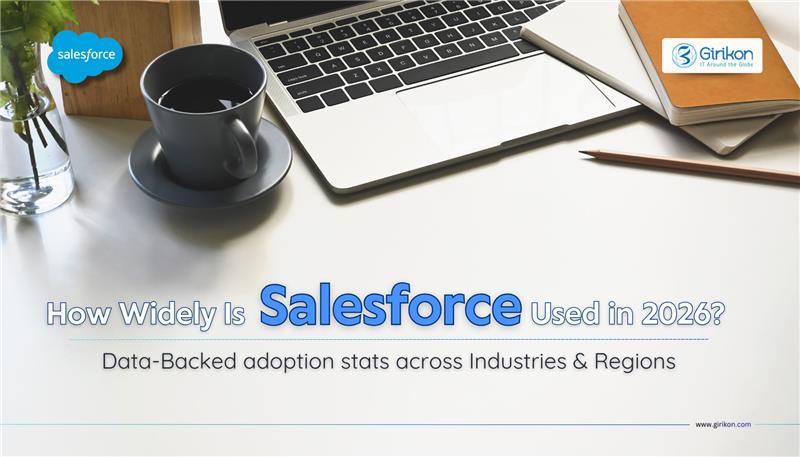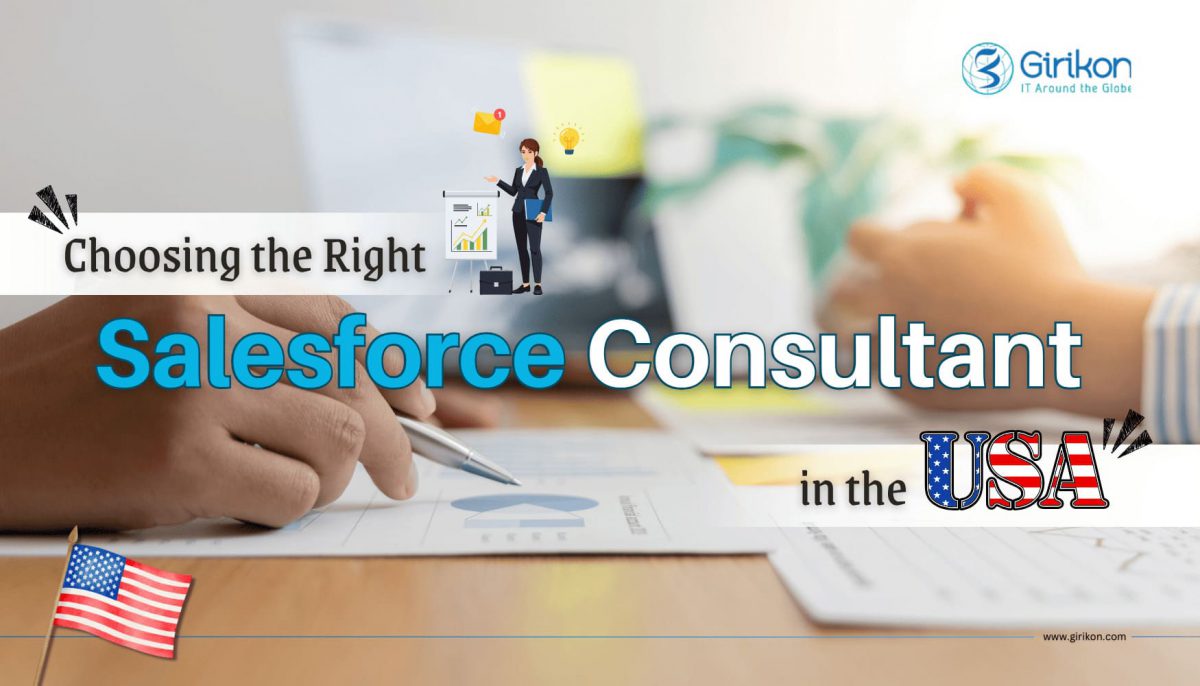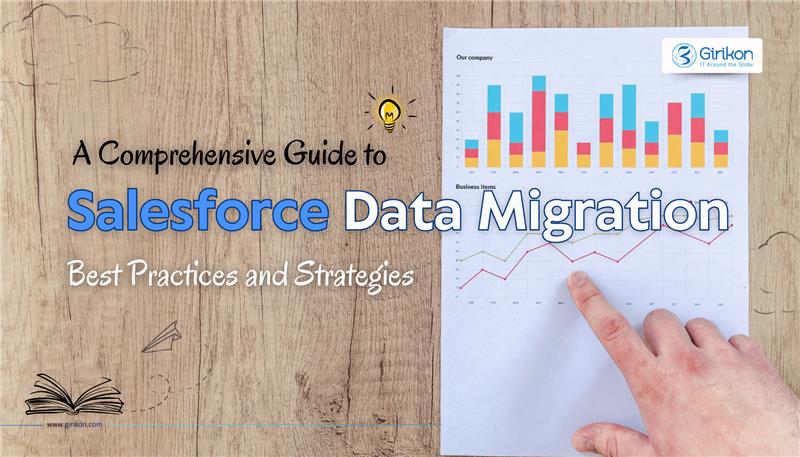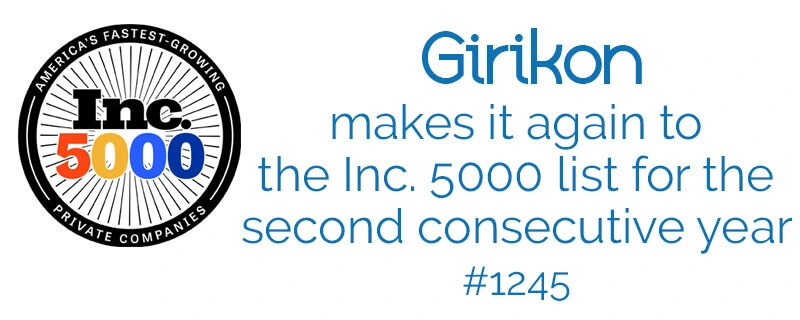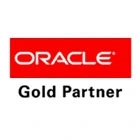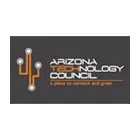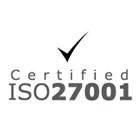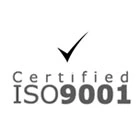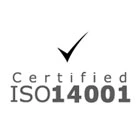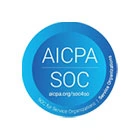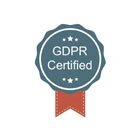Salesforce may be a powerful and trending solution—but unlocking its full potential requires more than just turning it on. That’s where the Salesforce consulting company appears and acts as strategic advisors, hands-on problem solvers, and system architects who ensure that Salesforce is designed, implemented, and optimized in a way that drives real business value. Read through the guide to learn what their core duties include.
Core Duties of a Salesforce Consultant
1.Discovery & Requirement Gathering
Prior to embarking on any actions towards Salesforce implementation, it is necessary to first identify the core need of the business. Hence, without a thorough discovery phase, a Salesforce implementation may lack direction. This phase calls for a Salesforce consultant to work closely with end users, department heads, and managers. In that way, the consultants learn how this particular organization works, what challenges it faces, and how successful implementation helps it resolve those problems. Below is what this step encompasses:
Workshops and Interviews
Consultants meet with different teams like marketing, service, IT, and sales to gather input. This meeting helps them learn about manual processes, current challenges, and wish list features directly from the people who are going to use Salesforce.
Mapping Current Workflows and Pain Points
In this step, consultants analyze everything about how things happen in a business, how leads are tracked, and how customer service cases are handled. They identify gaps, inefficiencies, or other bottlenecks that Salesforce can fix.
Defining Success Criteria for the Implementation
Instead of getting Salesforce up and running, the step defines how success looks like, i.e., faster lead conversions, improved customer support response time, and better visibility into sales pipelines.
2.Solution Design
Now that the discovery and requirement gathering is complete, it’s time to turn the insights collected from the first step into a real and workable plan. And how would Salesforce consultants do it? Well, they put your business needs in one place. This helps them create a tailored blueprint for how Salesforce will be configured to intersect those goals.
Here is what the phase includes:
Designing System Architecture
The consultants draw the big-picture structure of the Salesforce system including modules like Experience Cloud, Service Cloud, and Sales Cloud. This structure defines the data flow, modules alignment, and third-party tools' connection to ensure security, scalability, and efficiency.
Recommending the Right Salesforce Products, Editions, and Integrations
Instead of moving with an approach of “one-size-fits-all," the consultants build the customized solution by letting you choose the exact products like Field Service Lightning, Pardot, CPQ. Moreover, they add editions like Professional vs. Enterprise that not just matches your business goals but also comes under the budget. Besides, consultants advise on integrations—how external systems should be connected.
Crafting a Future-Ready Data Model with Optimized Workflow Integration
At this moment, consultants define the way data must be organized (fields, custom objects, and relationships), and business processes must be automated (lead routing, case escalation, and approval processes). This ensures that Salesforce supports your future growth and current needs without turning out to be a messy and outdated system.
3.Configuration & Customization
Having finalized the design, now it’s time to bring the solution to reality. That’s where Salesforce consultants configure and customize the platform based on your unique business goals so that it perfectly aligns with the objectives.
Set Up Custom Fields, Objects, Page Layouts, and Record Types
Custom Fields: Beyond what Salesforce provides, this allows you to capture the data you need. For example, you may require a “Service Tier” field on a Case and a “Vendor Type” field on an Account.
Custom Objects: If your business tracks data that doesn’t fit into Salesforce’s standard objects like Opportunities, Accounts, and Leads, a consultant can create entirely new ones—Projects, Subscriptions, and Assets.
Record Types: It is useful only when managing different processes for the same kind of data—like handling renewal sales and new sales separately—without mixing things up.
Page Layouts: This controls what users view and interact with, making sure users see only fields and features relevant to them.
Deploy automation features by configuring flows, approval routes, and process builders
Flows: These are dynamic and visual automation tools, useful when you need to process case resolution, quote approval, and onboarding.
Approval Rules: Based on predefined logic, it automates the approval of certain records like large discount approvals and high value opportunities, thus keeping decision-making consistent.
Process Builders: Used for automating certain tasks like triggering notifications, sending emails, and updating fields.
Customize Dashboards, User Interfaces, and Reports
Dashboards: Bring in summaries of different business metrics. For example, a support team might get to learn about open cases by priority, meanwhile, a sales manager sees pipeline by stage.
User Interface (UI) Customization: This includes optimization of page layouts, navigation, and buttons for usability and clarity—so users work seamlessly with Salesforce.
Reports: Dynamic reports allow users to dive deep into bottlenecks, trends and performance, thus helping them improve further and match user needs with KPIs.
4.Integration with Other Systems
Salesforce is no doubt dynamic software—however, it works even more effectively and smarter when it aligns well with the tools your business uses. That is why integration is crucial, connecting Salesforce to your other technology systems and saving team members from wasting time manually copying data and bouncing between platforms.
Integrate marketing, customer service, ERP, or custom app together like
Marketo, Mailchimp, or HubSpot for marketing
Custom In-house applications built exclusively for your organization
Robust ERP solutions to optimize inventory, financial management, and business operations.
Customer support platforms like ServiceNow and Zendesk
Use APIs, Middleware, or AppExchange Tools for Seamless Data Flow
APIs serve as the channels through which two systems come in real-time sync with one another.
Middleware Tools like Dell Boomi, Zapier, and MuleSoft conduct intricate integration and chain multiple apps in one workflow.
App Exchange Solutions provide pre-built connectors for apps, enabling their customization based on businesses’ unique needs.
5.Data Migration & Management
Transferring a lot of data from an older system is what is required when a company makes a switch from other systems to Salesforce. But here is the catch. Moving data isn’t as simple as just copying and pasting—because it requires planning, precision, and care. This ultimately results in turning data all clean, secured, and organized.
Cleanse, Map, and Transform Data
Cleanse: Eliminate duplicates, fill in missing information, and resolve incorrect values to prevent data from clogging the system.
Map: Align old data fields with new Salesforce fields, making your old “Client Name” field mapped to Salesforce’s “Account Name.”
Transform: Turn one format into another to fit Salesforce's structure.
Consider Data Accuracy, Structure, and Security
Accuracy: Your records should bring current and updated business information.
Security: Sensitive data is treated accordingly and is put under access permissions so that only the right people with authorized permission have access to it.
Use Tools like Third-Party Solutions and Data Loader
Third party tools like Jitterbit and MuleSoft provide advanced features for complex and ongoing migrations.
Data loader, a Salesforce provided tool helps in bulk uploading, updating, or deleting data for large data sets.
6.User Training & Change Management
Salesforce implementation can be technically perfect, but its adoption will fail if users don’t understand how to use it. That’s where training and change management appears and ensures that the team understands how to use the system confidently. Here is how the consultants make training and change management happen.
Create and Deliver Training Materials and Sessions via Concerning These Factors
Training Format Types: Create records of video tutorials, live workshops, cheat sheets, FAQs, and interactive walkthroughs.
Audience-Specific: Tailors the content for various groups like service agents, admins, and sales reps so that what is relevant to a specific user is delivered.
Real-Life Scenarios: Train on actual business use cases to make learning more relatable and practical.
Design Onboarding Plans for Different User Roles
As consultants are already aware that onboarding is role-based and streamlined, they ensure that different teams learn and understand different things. For instance:
Sales teams focus on pipeline tracking, quote generation, and lead management.
Executives require guidance on reports, key metrics, and dashboards.
Customer support teams are trained in segments like case escalations, SLA, and case handling.
Guide Users on Best Practices and Usage Policies
Flexibility within Salesforce is good—but it can lead to inconsistency if not guided well. That’s where consultants come and set guardrails by:
Creating documentation that teams can refer to when questions come up.
Establishing policies like updating frequency, requiring fields, and naming conventions.
Sharing best practices for task tracking, opportunity updates, and data entry.
7.Post-Implementation Support & Optimization
In the course of the Salesforce platform going live, the best Salesforce consulting company makes sure that it performs well, delivers value, and evolves over time. Here is how they do to ensure this:
Monitor System Performance: Consultants ensure that the system is functioning well in terms of user activity and accuracy. This way they track reports, integrations, and automation to flag any technical issues that need to be resolved attentively.
Offer Ongoing Support and Enhancements: They resolve bugs, ensure feature enhancements based on new requests, and consider user support when new hires need onboarding.
Refine Workflows and Features as Business Needs Evolve: Workflows require adjustments with your company stepping towards growth or launching new products and services. That’s why the best Salesforce consulting company revisits the setup periodically to fine tune your processes.
To Sum it Up!
Together, these Salesforce implementation partners help ensure that Salesforce remains a living and growing part of your business, not just a static system that gets dusty after launch. Not just these consultants provide the foresight and support that ensure successful implementation but also act upon their post-launch responsibilities.
If you want to measure the true return on investment collected with Salesforce’s potential, consider meeting with our experts at the panel. They align Salesforce capabilities with your future business strategy, thus ensuring that the engine of innovation and agility will bring lasting growth and a competitive edge in your industry.
Retailers need to come up with innovative strategies to attract and retain customers in the rapidly expanding e-commerce era. For this reason, in recent years, more retailers have resorted to SMS marketing.
The advantages of using retail SMS, how to begin retail SMS marketing and real-world SMS marketing campaign examples will all be covered in this article.
Benefits of SMS marketing for retail
When using SMS in retail marketing, businesses will experience a number of benefits. Here are some of them:
Higher open rates. SMS messages have a staggering 98% open rate. The open rate of emails is 20%. Users feel compelled to read SMS messages because they are sent directly to their mobile phones.
Higher conversion rates. Well-crafted SMS campaigns have shown to be about 6 times more effective than email marketing when it comes to conversions.
Instant delivery. It takes little time to send, receive, and read text messages. Most texts are read within a few minutes of being sent, according to research. Because of this, text marketing works well for communications that need to be sent quickly.
Seamless integrations. Integrating modern business texting platforms with your existing marketing systems is easy. This enables merchants to develop an omnichannel strategy and synchronize data across platforms.
Improved customer engagement. Research indicates that 45 % of people respond to SMS texts. Because of this, it's a great way to get feedback from customers and have two-way interactions.
How to utilize SMS marketing in Retail
SMS marketing can assist retail establishments in overcoming some of their most significant obstacles by increasing sales and interacting with their target audience. Let's examine a few typical ways that SMS can benefit merchants.
Reduce excess inventory. To instill a sense of urgency and motivate customers to buy things and clear out old inventory, run a text campaign promoting a flash sale.
Discounts. Distribute time-limited sales or discount coupons on old inventory or slow-moving products.
Personalized offers. Use text messaging campaigns to interact with loyal customers, offering them tailored deals and incentives to buy seasonal or near-expiration products.
Events. To get the product off the shelf, advertise an in-store event.
Low inventory warning. Inform customers when a certain product is almost gone so they can buy it before it sells out.
Back-in-stock alert. Notify customers who have joined a waitlist or indicated an interest in particular products when they become available again.
Product alternatives. When a certain item is out of stock, let customers know about other similar products so they can still buy it and not get frustrated.
Pre-order opportunities. Notify customers of impending product releases or pre-order possibilities so they can reserve the things they want ahead of time.
Product launch. Create anticipation by informing customers when a new product will be available in stores. Send your contacts a catalog or sneak peek to pique their attention.
In-store sales. Throughout the year, run special sales, particularly around the holidays. One of the best ways to boost traffic and encourage purchases is through Black Friday text marketing.
Improve customer satisfaction. To learn more about your customer satisfaction levels and pinpoint areas for development, send a text survey.
Brand surveys. To find out what your consumers like, what intrigues them, and what products they would want to see more of in your retail business, you can also send them a survey.
Order updates. Keep customers updated about their order status. Notify them of any delays or changes they should be aware of, as well as when an order is prepared for collection.
Customer support. Utilize SMS to proactively respond to consumer questions or concerns, offering timely, personalized assistance to improve the overall customer experience.
Retain more customers. Establish an SMS loyalty program that encourages repeat business and builds customer loyalty by giving customers access to exclusive offers, prizes, or points for their purchases.
Personalized content. On their birthdays or anniversaries, send customers personalized texts expressing your gratitude and providing exclusive deals or prizes.
Re-engagement campaigns. Sending tailored offers or reminders to dormant or inactive contacts via SMS can rekindle their interest in your brand.
Retail SMS Marketing Best Practices
By using these best practices, your SMS marketing campaigns can generate insane levels of engagement:
Obtain explicit consent
Before sending SMS messages, we get users' express and unambiguous consent. The following are some excellent practices for SMS opt-in:
Express written consent. Use online forms to get explicit consent before sending marketing SMS texts.
Give recipients a clear way to opt-out. In order to improve your brand’s reputation, include the option to unsubscribe in every SMS.
Log all opt-ins and opt-outs. This facilitates the creation of a customer list for SMS messaging.
Indicate the goal and frequency in clear terms. Terms and conditions (T&C), privacy policy, and other information might be included to clearly indicate the frequency of communications and their intended use. If you don't currently have a terms and conditions paper, think about using a template.
Create a strong subscriber list.
In order to reach contacts and boost opening rates, the subscriber list is carefully vetted. The following text marketing advice will help you build the perfect list of subscribers for your SMS campaigns:
Spread the word about your SMS campaign to the different subscribers via social media and email.
Incentivize sign-ups on your social media page.
Add an invitation to pop-up ads.
At checkout, invite customers to join.
Segment audiences to improve targeting
In SMS marketing, audience list segmentation efficiently targets and boosts engagement. Here are some ways to effectively segment your contact list.
Demographic segmentation: By location, gender, and age.
Behavioral segmentation: Segment them based on browsing habits, engagement levels, and past transactions.
Transactional segmentation: Segmentation based on purchasing patterns, frequency of purchases, and recent buys.
Engagement segmentation: Segmentation based on click-throughs and sign-ups.
Event-based segmentation: Sending offers via SMS makes a stronger impression if you know any information about your contacts or their milestones, birthdays, or other significant occasions.
Make your content Relevant, Valuable, and Unique.
The text marketing copy should be interesting, even if the SMS is a sales message. SMS marketing copy should be based on 3 key criteria.
Relevance
Sending pertinent information improves targeting and reach, just like it does on any other marketing platform. As we mentioned earlier, there are various ways to develop audience segments. Give prospective customers options for choices for products and services according to their preferences.
Value
Think of your SMS recipients as VIPs. You can contact your subscribers directly at any moment by using the phone numbers they provide you. You can successfully increase the value of your SMS by providing early access, exclusive offers, or notifications about the debut of new products or services.
Uniqueness
SMS messages have a 160-character limitation, so they should always be succinct. You can mention a unique purchase, like a pair of snow boots, that they ought to think about purchasing.
Personalize your messaging
SMS campaigns are special because they mix the best aspects of one-on-one contact with the convenience of mass marketing. Here, personalization calls for a different strategy than email. SMS requires dynamic content that changes according to the user's activity, providing updates and special offers, etc. 80% of customers buy from brands that deliver a personalized experience.
Show off your brand
When recipients are unsure of the source of the text, they are less likely to click on the link. Making reference to your business or organization is another aspect of SMS compliance. To spread brand awareness, you can mention your brand or business name at the beginning of the SMS or send a virtual contact card to make it easy for recipients to correctly identify the sender and the brand.
Provide exclusive offers
Exclusive offers distributed via SMS are a proven method of growing the list of subscribers. Creating a sense of urgency, tailoring the offers, offering unique access and incentives, etc. are some strategies to make special offers that appeal to your audience.
As a CTA, always provide a link.
Direct communication via SMS increases opening and conversion rates. To make it simpler for interested receivers to visit your website, include a link in your texts. Without the link, prospects may not understand the message. Nonetheless, there are some efficient methods for including links in your SMS texts that you ought to adhere to. This includes avoiding sending links at the beginning of an SMS and providing only one link which is typically the Call To Action at the end of the text.
Include multimedia in your SMS
Your campaigns can become more dynamic and effective with the help of the multimedia messaging service or MMS, which can also greatly increase interaction. Incorporating clickable links to videos, audio samples, and other material into SMS marketing is a very effective approach to employing multimedia to increase audience engagement.
Send SMS during regular hours.
SMS texts should ideally be sent during regular business hours. Being polite and non-intrusive to subscribers is important while using SMS marketing. For instance, they won't appreciate it if they get an SMS notification at 2 AM. Additionally, from the standpoint of engagement, consumers are less likely to use such a marketing strategy to deliver messages between the hours of 9 am and 8 pm. Instant action from your subscribers is just one of the many advantages. It is unlikely that anyone will act inappropriately around them during regular business hours.
Maintain consistency in messaging frequency.
Maintaining a regular messaging frequency is one of the greatest SMS marketing strategies. You are prepared to refrain from overwhelming subscribers with SMS texts. Sending too few or too many texts, however, will come out as unexpected and possibly hostile. A strong social media strategy may provide subscribers with consistent information, and successful SMS ads also stick to a regular and predictable timetable. Depending on the kind of business you are in, the schedule must change. For example, when a sale is imminent, you need to send out more than six SMS every day if you are an e-commerce marketer.
Invest in smart SMS marketing software.
Numerous advantages of SMS marketing software include improved targeting through sophisticated segmentation and personalization, increased engagement through greater open rates, and more. By facilitating smooth, personalized data classification, these interfaces can offer a cohesive marketing approach. The performance of SMS marketing can also be monitored with the help of data analytics tools. With only a few clicks, you can send tailored texts to every contact using GirikSMS, a robust SMS marketing platform, purpose-built as a native SMS for Salesforce app that offers all these functionalities.
Stay compliant
The dos and don'ts of SMS marketing are outlined in laws specific to the business's location. Be aware that over 40% of customers would rather get four to six communications every month. Depending on the location, spamming may result in legal violations.
Monitor and analyze performance.
Keep a handle on campaign performance. To find out what works with the audience, always look at analytics like click-through rates and open rates. GirikSMS, a native Salesforce SMS platform, provides comprehensive analytics and insights on your SMS campaign performance directly within the Salesforce environment.
Respond promptly to replies.
In SMS marketing, prompt responses to consumer questions and comments are essential for creating deep relationships between the brand and potential customers. Through their responses, subscribers can demonstrate your value-driven engagement and the effectiveness of your campaign. Here are several strategies to react quickly:
Configure automated responses.
Give priority to customer questions.
For frequently asked inquiries, use chatbots.
Establish targets for response times.
Personalize your responses.
Grow your retail business with GirikSMS.
Retailers can overcome typical marketing challenges, increase sales, and cultivate enduring consumer loyalty by leveraging the powerful business messaging features of GirikSMS.
Are you prepared to increase sales and enhance both in-store and external customer communication? Retail SMS marketing is easy to get started with thanks to GirikSMS's messaging platform. GirikSMS provides retailers with the tools they need, whether they want to have meaningful two-way interactions or reach a large number of customers at once. Sign up for free 30-day trial to test drive GirikSMS today.

 +1-480-241-8198
+1-480-241-8198 +44-7428758945
+44-7428758945 +61-1300-332-888
+61-1300-332-888 +91 9811400594
+91 9811400594